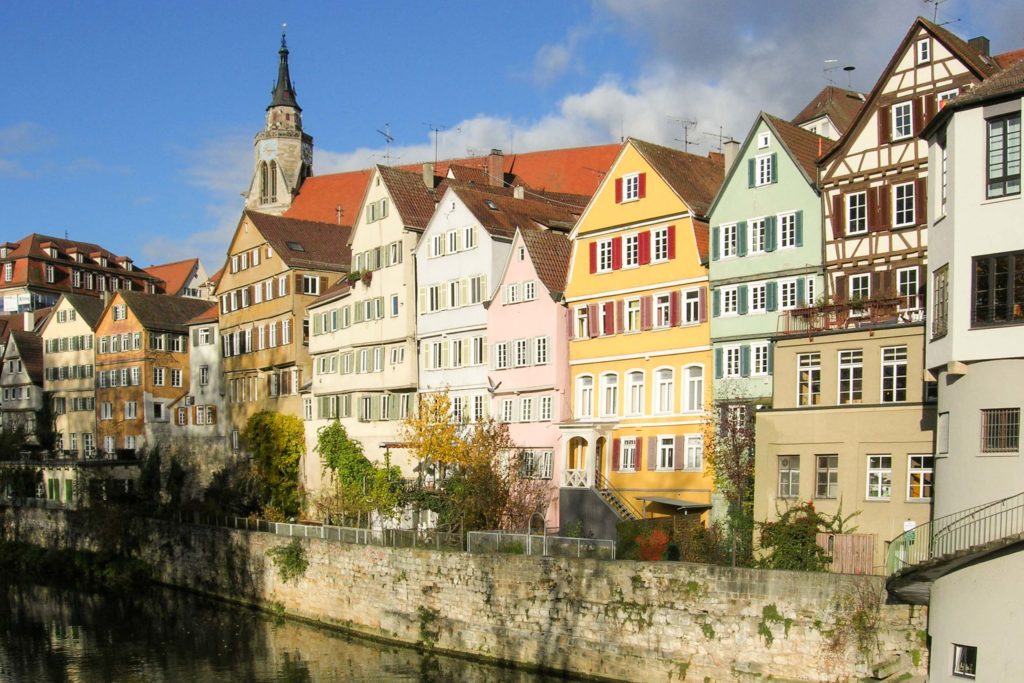
Baden-Württemberg is located in the southwest of Germany and, in addition to sharing borders with France in the west and Switzerland in the south, it adjoins the German states of Bayern (Bavaria), Rheinland-Pfalz, and Hessen. Founded in 1949, it is one of the 16 states that together constitute the Federal Republic of Germany.
There are nine research universities distributed throughout the state, and each has its own distinctive atmosphere, academic profile, and attractions. Among the most prosperous states in Germany, Baden-Württemberg has for many years made a priority of strategic investment in education, research, and innovation, and, as a consequence of that policy, what all nine of its research universities share is a standard of excellence in teaching and research that is equal to any, not just in Germany but in the whole of Europe.

Outside the classroom and laboratory, Baden-Württemberg is famous for the beauty of its natural landscapes and of its cities, towns and villages, as much as for the delights of its distinctive regional cuisines and excellent wines. It is home to the Black Forest and the Swabian Alb, which offer superb hiking and cross-country skiing, and the Neckar Valley and Hohenlohe regions are counted among the state’s areas of exceptional natural beauty. Baden-Württemberg is bordered to the south and west by the Bodensee (Lake Constance) and the Upper Rhine Valley, and the River Danube also has its source in Baden-Württemberg. And as for other sights on which to feast your eyes in Baden-Württemberg, there are simply far more mediaeval towns, villages, and castles to explore, as well as baroque and classical palaces to visit, than one can visit in a year.
The state capital is Stuttgart, famous as the home of such companies as Daimler and Bosch and of such cultural attractions as the world-renowned Stuttgarter Ballett. In addition to its theatres, opera, and musical offerings, Stuttgart’s museums range from the collection of historical and contemporary art in the Staatsgalerie to the more recently opened Mercedes-Benz Museum and the Porsche Museum. This is by no means to say that Stuttgart has a monopoly on cultural life in Baden-Württemberg: each of the university cities will provide you with much to see and do — the Zentrum für Kunst und Medientechnologie (ZKM) in Karlsruhe, for instance, is an absolute “must see!” — and really nowhere, thanks to the really excellent public transportation network, is very far from anywhere else.
To keep your strength up while you study hard and enjoy all the attractions of Baden-Württemberg, you will need to sample the distinctive and highly praised cuisines of both Baden and Schwaben (Swabia). By the time you’ve tried the Schwarzwälder Kirschtorte, the Spargel (only during the season!), the Badische Schäufele, the Bubespitzle, the Badischer Zwetschgenkuchen, the Käsespätzle, the Flädlesuppe, the Gaisburger Marsch, the Linsen mit Spätzle, the Maultaschen, the Schwäbischer Zwiebelkuchen, and so on, and so on, you’ll be starting to get a sense of what we mean.
Moving anywhere new is of course a challenge that we would not want to understate, as is getting used to living in another language, but making the effort to meet people in Baden-Württemberg, to learn about how they live, and to experience life with them is, we believe, perhaps the most important and rewarding aspect of the OBW program. It is for us easy to see why so many students from Ontario have come to love Baden-Württemberg and to speak and write of it as a second home.

